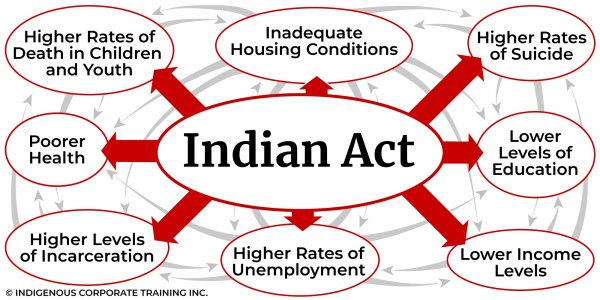
Incarceration rate of Indigenous People in Canada is a National Crisis
Incarceration rate of Indigenous People in...
On 6 June 2023, the Indigenous Corporate Training Inc. in an article said The incarceration rate of Indigenous peoples in Canada should be labelled a national crisis. Indigenous adults accounted for about one-third of all adult admissions to provincial and territorial (31%) and federal (33%) custody while representing approximately 5% of the Canadian adult population in 2020. Indigenous youth accounted for one-half (50%) of youth admissions to custody in 2020/2021 while representing about 8% of the youth population. Looking at the early days of the penitentiary system, which began with the 1834 Penitentiary Act, one of its goals was to reform inmates into industrial workers through “solitary imprisonment, accompanied by well-regulated labour and religious instruction.” Prisons and residential schools were two sides of the same coin. Two federal institutions with the same goal, albeit one less directly focused on Indigenous people - to divest Indigenous people of their connection to their land, history and culture; through assimilation to “do away with the Indian problem.” Residential schools were the tool the federal government used to effectively separate students (150,000 over the 150+ years the schools were in operation) from their culture, spirituality, community and family. The outcome was the majority of those who survived (over 6,000 died or disappeared) were culturally rudderless. The passing of the Indian Act in 1876 put Indigenous people on a path of increasing intersections with the law. Under the repressive measures of the Indan Act, overtime, it was an offence for an Indigenous person:
• To keep their children out of residential schools
• To practice cultural ceremonies
• To leave the reserve without a permit
• To sell farm products without a permit
• To hire a lawyer
• To form political organizations
Injustice and Indigenous Women
The report goes on to say despite decades of legislative and policy efforts to address systemic racism and misogyny in the criminal legal system, the overrepresentation of Indigenous women in federal prisons has continued to skyrocket. As of May 6, 2022, Indigenous women account for half of all women in federal prisons, yet represent fewer than 4% of women in Canada. According to the report institutionalization where Indigenous Peoples were subjected to violence and forced assimilation, and exclusion from the safety of communities due to the Indian Act resulting in intergenerational trauma, marginalization and lack of access to adequate economic, social, health and other supports, bias with respect to police response towards Indigenous peoples, forced separation of Indigenous women and children and their communities, are targeted factors in judicial wrong-doings which result in the violation of justice for indigenous women. in 2022, the federal government launched the “Federal Framework to Reduce Recidivism,” designed to break the cycle of reoffending, support rehabilitation, and make the communities safer for everyone. The report concludes The Framework, while well-intentioned, is treating the symptoms, not the underlying disease, which is a justice system rooted in colonialism. A more holistic approach is required, and that means a return to self-government, self-determination and self-reliance.
https://www.ictinc.ca/blog/higher-levels-of-incarceration-6-of-8-key-issues
indigenous corporate training (ICT)

 Reload
Reload



